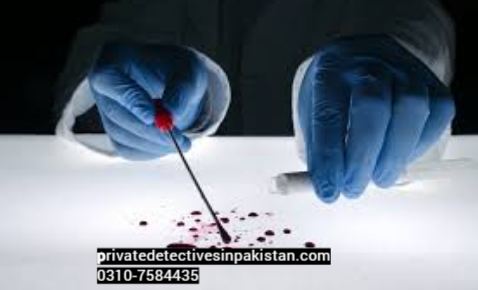FORENSIC EVIDENCE: As per private detectives in Pakistan or private detective in Lahore or private detective in Karachi, the forensic Evidence is part of circumstantial Evidence Forensic evidence is classified as circumstantial evidence. Circumstantial evidence is evidence that is indirect. It’s similar to a chain, linking the accused to the perpetrator of the crime. If one link in the crime is not present this can sabotage the evidence that was made by the prosecution. prosecution. Locard’s principle provides greater clarity about Forensic Evidence. The principle is based on the concept that the perpetrator will leave traces or marks at the scene of the crime, or carry evidence from the scene of the crime. It works on the basis of exchange, where every contact leaves an impression. For instance, the person who isn’t vigilant in the commission of the crime could come into contact with the surface and consequently, leave blood-stained traces. The collection of hair by private detectives in Pakistan or private detective in Lahore or private detective in Karachi investigating the crime could result in a linkage of the suspect to the incident. This is only one of the numerous forms that trace or forensic evidence may be used. Forensic evidence refers to the type of evidence that results from The interaction of a person with an individual. The contact of the person with a material or material or surface contact between two materials or surfaces. Functions of Forensic Science of Forensic research in criminal investigation, specifically those involving counter-terrorism, can be understood through a reference to three issues.
Understanding the role of FORENSIC Science in Criminal Investigations Whether the crime was committed? Relevance: Forensic science from the private detectives in Pakistan or private detective in Lahore or private detective in Karachi may be utilized to determine the truthfulness of the factors and conditions that led to the crime (also called corpus deliciti). What was the manner in which and when did the crime occur? Relevance: This can be determined by examining the details and the circumstances surrounding the crime to determine the manner in which the crime was committed as well as the possible time the crime was committed. Who was responsible for the crime? The significance of this is that forensic science proved who was the perpetrator by using different methods like fingerprint analysis or DNA analysis. The process connects the criminal with the crime via traces left at the scene of the crime or collected from the scene of the crime. This article explains the legal framework for Forensic Evidence within Pakistan i.e. the different legal provisions pertaining to forensic evidence for private detectives in Pakistan or private detective in Lahore or private detective in Karachi, the different types of forensic evidence and their relevance/admissibility in court, and the procedure to be followed in order to collect admissible forensic evidence. While also highlighting other relevant legal requirements, this article is focused upon the Qanun-e-Shahadat Order, 1984 that regulates the laws pertaining to the use of evidence in court hearings.

The other statutes discussed by private detectives in Pakistan or private detective in Lahore or private detective in Karachi comprise those of the Code of Criminal Procedure, 1898, and the Investigation for Fair Trial Act which provides provisions relating to the use of covert measures in investigations in Intelligence Agencies. Qanoon’s Order for the Protection of Security Article 164 of the Qanun-shahadat Order of 1984 In such instances where the Court might deem appropriate the Court can allow the presentation of any evidence that might have become available through the use of new technology or devices. Case Study Saifal vs. State209 The three defendants of this trial were convicted of the commission of Dacoity. The charges were on the basis of credible witness testimony and evidence that was admissible under Art. 164 of Qanun-e-Shahadat, i.e. Record of Mobile Company and the evidence of its representative. In this case, the production of evidence that is produced using modern technology and techniques can be admissible in court. The most looted items, as claimed by the accused included mobile phones. In the course of the investigation, the IMEI code of one of the stolen mobile phones was connected directly to the Sim record that was retrieved from the company Mobilink. The records provided by this firm revealed that two of the three Sims that were used on the mobile phones stolen are registered with the identity of the suspects. The Co-Coordinator of the Mobilink Company was also examined by the prosecution and he was a part of the defense for prosecution proving the phone that was stolen from the house of the complainant being operated by the Sim that was registered under the name of the accused.

